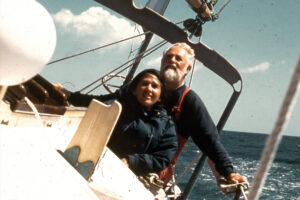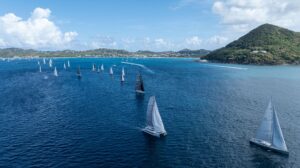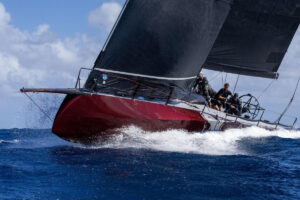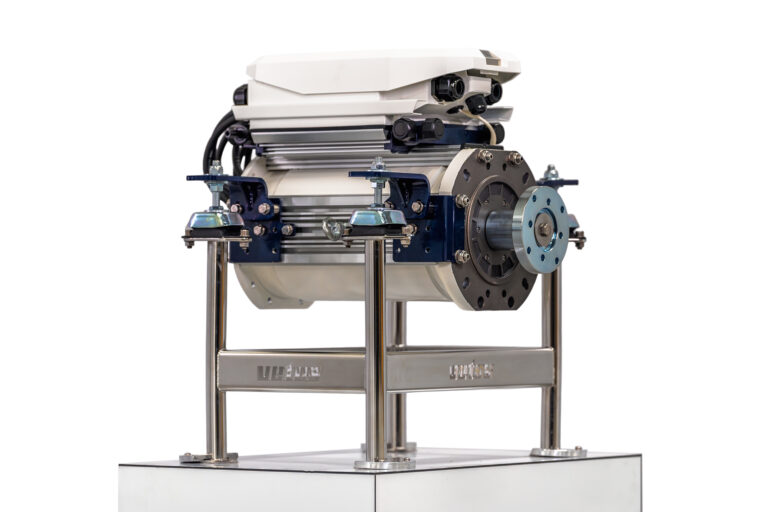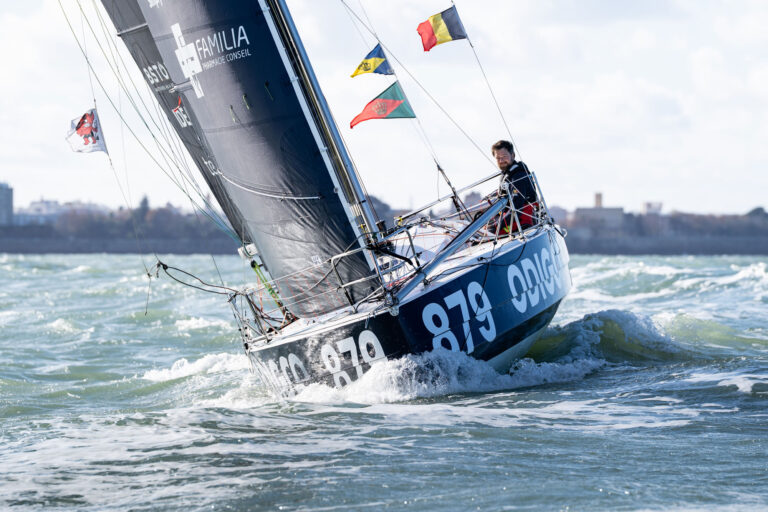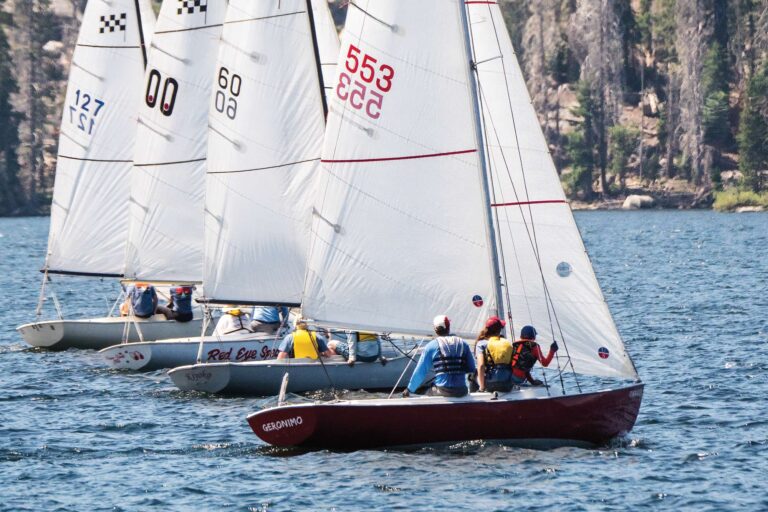
gulf of aiden 368
We, the crews of all 27 yachts heading westward off the coast of Yemen, watched with dread as a large, rusty fishing boat slowly revealed itself in the morning mist. It was dead in the water directly ahead of us-and it was exactly what we hoped to never see. We didn’t say it aloud, but we were all thinking the same thing: mother ship. It fit the profile exactly.
Our convoy was sailing in tight military formation and pressed on despite our nervousness. The tension was thick. We’d tracked the shabby vessel that lay ahead on our radars with much discussion and speculation. We’d just entered the most pirate-infested, attack-prone area in the Gulf of Aden-and, for that matter, the world. The slow-moving vessel had been heading south toward Somalia but then suddenly stopped. It appeared to be waiting. A large group of rough-looking men were working frantically on its aft deck.
Just as we were close enough to smell its rotting fish, we heard a roar. A large, powerful skiff appeared around its transom and careened directly at us at high speed. For a moment, our formation held. Then various VHF calls erupted in alarm: screaming, shouting, a curse. I could see the masts of boats suddenly swerving dramatically to avoid contact with the skiff. This caused a knock-on effect; our tight, practiced formation was coming apart.
“He’s right next to me!” screamed a woman on the VHF. “This must not be allowed to happen. I need support right now! Now, goddamn it!”
It was bedlam. Yachts scattered like baitfish before a barracuda. The woman on the VHF was completely panicked and hardly making sense as she begged for-what? Divine intervention?
Finally, a calm, almost bored yachtie’s voice chimed in and said, “Just a fisherman begging cigarettes. No problem.”
I realized I’d been holding my breath. I let it out with a jagged sigh of relief.
“False alarms don’t seem so false while they’re happening, do they?” said my wife, Carolyn.
“Welcome to yachting, Gulf of Aden style,” I said in response.
Everyone who circumnavigates must either sail the Red Sea or around the southern tip of Africa. Since we’d already done the breezy African route during a previous circumnavigation, we chose the Red Sea this time. In order to reach the Red Sea, however, we had to transit the dreaded Gulf of Aden, where the Somali pirates like to play. Thus we joined a super convoy of 27 other sailing yachts for the 650-mile passage from Salalah, Oman, to Aden, Yemen.
It was great fun, but it was also highly stressful to navigate within 100 yards of other vessels for over five days while transiting the world’s most dangerous waters.
Our particular convoy was organized by Tom Sampson, a former British Royal Air Force officer and lifelong boater, who currently cruises the world aboard his Nauticat 34, Katanne. Tom generously shared his notes with me in preparation for this column.
It was strictly a Corinthian affair, so there was no cost to anyone. There were, of course, some ground rules. Participants had to be able to do five knots through the water and to be able to carry enough fuel for the full 650-mile run. Radar reflectors and masthead running lights were prohibited, and only dim, deck-level lights were allowed. Radio chatter was to be kept to a minimum, and handheld VHFs on low power were to be used whenever possible. Positions would never be transmitted in lat/long; only bearings and distance to secret waypoints would be allowed. We’d travel approximately 10 miles off the Yemen coast, well north of the Internationally Recommended Transit Corridor, where the pirates line up to attack commercial shipping.
Since we knew pirates might be equipped with radars, radios, and other gadgets, we didn’t use our regular boat names; instead, we adopted military-sounding ones: I was “Eagle Three,” and my German friend. Horst, on the Island Packet 38 Pacific Star, was now called “Merlin Lead.” All told, we represented 17 countries, almost a floating United Nations.
Tom decided we’d convoy in groups of six, with two lines of vessels arranged three abreast. Each group would have a leader in the front-center position. Each vessel would fall in on the vessel ahead and the one on its immediate side, approximately 100 yards apart. Group leaders would have special dim, deck-level blinkies to identify themselves at night.
“To have group leaders was the best decision I made,” Tom told me later. “I knew I couldn’t keep track of all 27 boats myself. But I didn’t have to. The group leaders did all the work. I just set the course and the pace, and everything followed smoothly from there.”
Part of Tom’s concept was that no vessel would be left behind for any reason; if a boat set out with the group and stayed with it, then we’d all come into Aden together.
“But with this guarantee comes responsibility,” said Tom at the skippers briefing the night before we shoved off from Salalah. “For the next week, we have to think of ourselves as one big family. Sure, we may have a few differences of opinion along the way, but it’s always one for all and all for one.”
A convoy boat lost power three times during the passage. Tom would then call for us to “loiter,” and the entire fleet would stop, more or less in formation, for 10 minutes for the mechanical problem to be sorted out. If it wasn’t, and there wasn’t enough wind to sail at five knots, the engine-less vessel was taken in tow until it could affect repairs. One of our vessels was towed for the final three days. Luckily, the Kiwi/American couple on the 70-footer Silver Fern once towed the America’s Cup boats in Auckland, so it was no problem.
Over a dozen boats became entangled in illegal floating fishing nets, mostly at night. Each time, the group would patiently wait while the crew untangled things, which occasionally required the pirate-spooked skipper to jump into the dark water with a knife in his teeth.
Luckily, we had light weather the entire way. If we’d encountered a major storm, it was agreed that we’d go our separate ways and reconverge at our next waypoint, knowing that pirate activity would be low because of the weather: Somali pirates generally don’t attack in winds greater than 25 knots.
The owners of a Southern Cross catamaran volunteered to keep the outboard engine on its large inflatable so it would be quick and easy to deploy in an emergency. We used it twice, both times to transfer fuel from a generous donor to a rueful benefactor.
Yet another convoy vessel volunteered to download daily “bad guy” position reports via SSB modem. Thanks to them, we knew that there was an open pirate vessel with seven men and a long ladder waiting 120 miles southeast of us for a full three days before they attacked a Korean tanker that finally wandered by.
Pirate attacks against large commercial vessels are a daily occurrence in this area; some days, multiple attacks occur within 100 miles of Aden. Luckily, small sailboats aren’t the preferred targets of the Somalis. The good news is that most attacks against freighters are repulsed, but the bad news is that little attempt is made to catch the attackers.
Only the Russian coalition forces bragged to me-they’d been drinking at the Oasis Club in Salalah-that they’d slid up alongside a nonplussed pirate boat, lifted it up via their deck crane while still full of pirates, and carried them both, boat and crew, back to cold, cold Siberia.
Our position was called in twice a day via sat phone to the United Kingdom Maritime Trade Operations, which served as the primary contact between vessels in transit and the military Coalition forces in the Horn of Africa that included an alphabet soup of such outfits as EU NAVFOR, CENTCOM, NATO, ALINDIEN, and various other members of the Combined Task Force made up by units from the United States, the United Kingdom, Spain, Italy, France, Poland, and Russia, among others.
Each of our convoy members kept a sharp lookout, visually and on radar, for approaching vessels. If any were sighted, the entire group was immediately given a heads up with bearing and distance. If any vessel felt an attack was imminent, the sailors could call for us to assume our attack formation.
Each group would then huddle, with the wing vessels moving in closer to the group leader and the second line squeezing up forward between them. At the same time, the first group would slow to three knots to allow the more vulnerable groups astern to catch up.
The final three yachts trailed 100 meters of polypro floating line astern to entangle the props of any pursuers. Each vessel carried such a line for passive defense but was cautioned against deploying it while in formation to prevent fouling friendlies.
In my opinion the most important ingredient for a successful convoy is the character of its leader. We were lucky to have Tom Sampson’s steady hand at our helm. Not only did he keep his cool; he even kept his sense of humor. When a freighter was being attacked by pirates and we were listening to it, horrified, on our relatively short-range VHF radios, Tom would occasionally break in calmly with, “Not to worry, this attack is taking place over 30 miles from us.”
There were, of course, a number of times when tensions flared, which is understandable when transiting pirate-prone waters. But for every act of individual selfishness, there was a collective act of selflessness. And there were heroes, too. Patrick and Margaret O’Neil aboard the Warrior 40 Aqua Magic lost their autopilot early on and had to hand-steer in extremely close quarters most of the way, despite being in their late 60s or early 70s and Margaret having a severe back injury which wouldn’t allow her to sit down or rest properly.
Everyone chipped in, just like family, if someone needed technical advice or supplies.
The result was 27 vessels arriving in Aden safely and free of any pirate engagement. We were all extremely grateful for our safe passage. It could’ve easily gone the other way, as it had for the traumatized crew of Rockall, who were captured and held for 52 days. (See “A Cruel Twist of Fate” in CW’s March 2010 issue.). And as it had for the crew of Lynn Rival, Paul and Rachel Chandler, who were abducted in October 2009 and are still prisoners as I write this.
So, a few days after our safe arrival, many of us gathered on the foredeck of our boat, Wild Card, which was anchored in almost the exact location where the attack on the USS Cole took place. We were there to honor the 17 young Americans killed in October 2000. We poured our prayers, our flowers, and our love into the harbor waters, as well as a tot of rum for each lost sailor.
“Peace,” we muttered sadly from the deck of an American yacht in the waters off the war-torn Arabian Peninsula.
Having survived the crossing, the Goodlanders are bound for the Mediterranean Sea.

